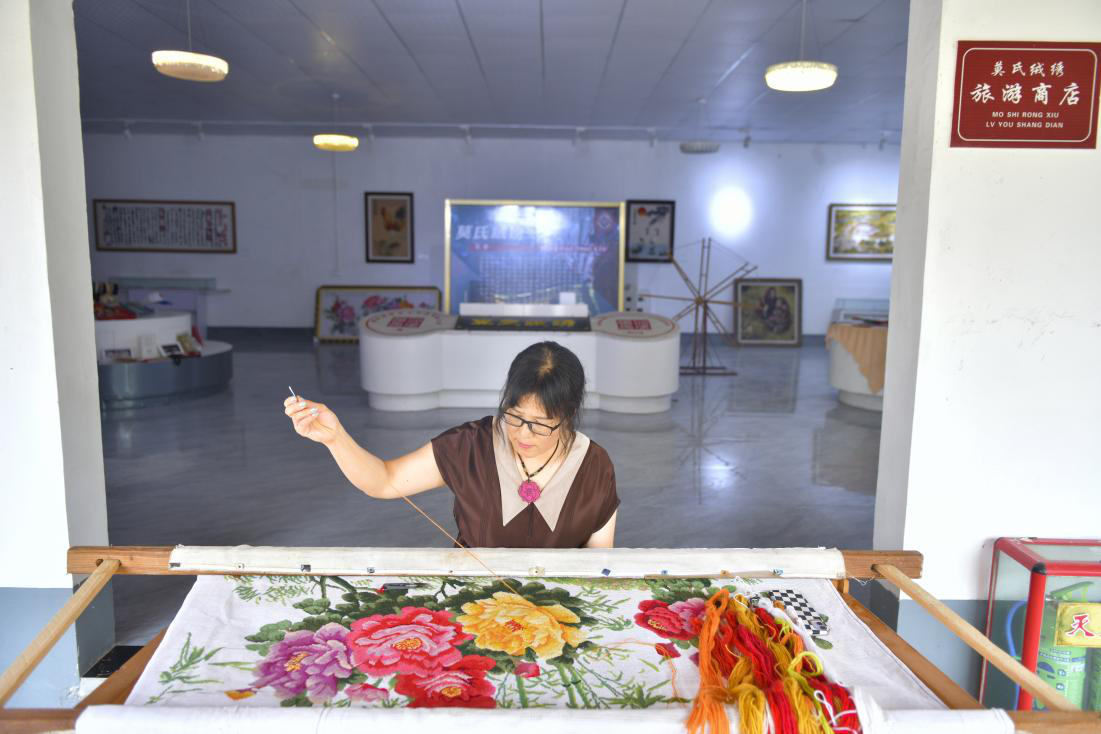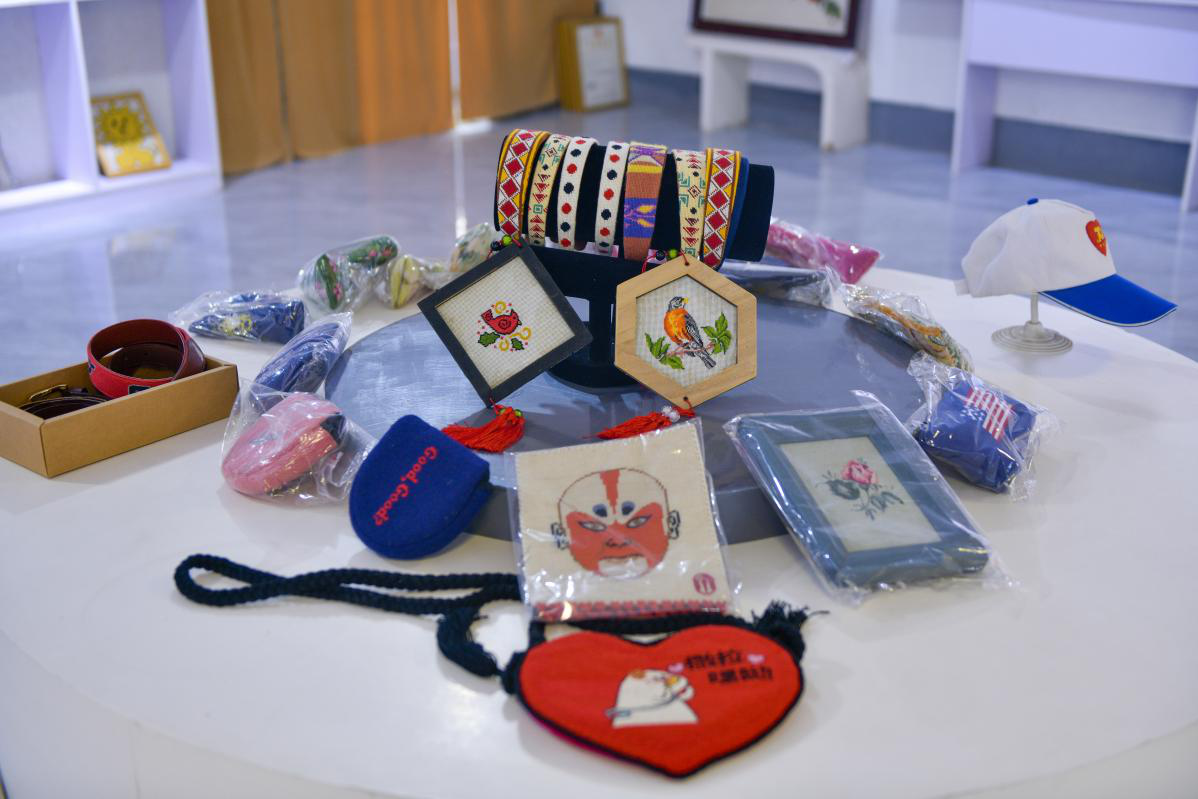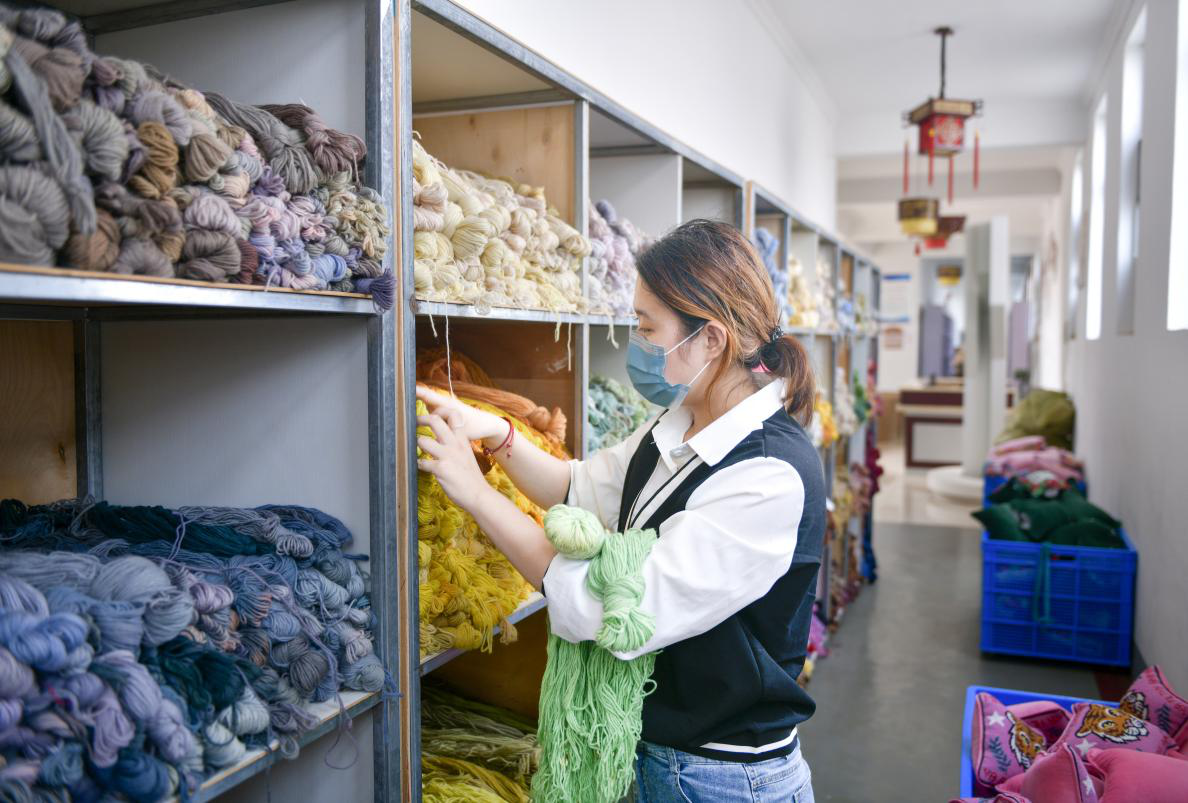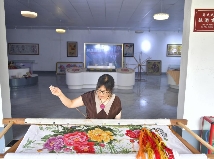BEIJING, Sept. 4 (Xinhua) -- Mo woolen embroidery, which is a form of traditional folk art with a long history, is an intangible cultural heritage in Linshu County, Linyi City, east China's Shandong Province. Currently, it is gaining popularity across the world.
The thread used in Mo woolen embroidery is made of wool . Over the past century, Mo embroidery has integrated European woolen needlepoint tapestry into traditional embroidery techniques, such as Xiang embroidery and Shu embroidery, becoming a unique form of art.

The photo shows Mo Zongrong embroidering.
Mo Zongrong, the fifth-generation inheritor of Mo woolen embroidery, grew up under the influence of the older generation of embroiderers. She was also interested in this technique, and became skilled at embroidery in early childhood.
After years of hard work, Mo Zongrong has made major progress in Mo woolen embroidery. She has played a role in further developing the techniques and applying the emboirdery to a wider scale, from purses and insoles to figure and landscape paintings, calligraphy by masters, cartoons and oil paintings. Some of her works have become permanent collections of Linyi Intangible Heritage Art Museum and the Art Gallery of Linyi University.

The photo shows a variety of Mo woolen embroidery works.
Meanwhile, Mo Zongrong has founded the Linshu Zongrong Handicrafts Co., Ltd., which adopts the business model of "company+e-commerce+farmers". The company has helped over 4,000 women and disabled people in the neighboring area to live a better life by landing a job in embroidery.

The photo shows a craftswoman picking embroidery thread.
Currently, Mo woolen embroidery products have been sold to over 20 countries and regions such as the United States, Japan and Italy, with an annual sales volume of more than 500,000 pieces. It has become a popular choice for collection among foreigners. (Edited by Yang Linlin with Xinhua Silk Road, linlinyanglyn@163.com)




 A single purchase
A single purchase









